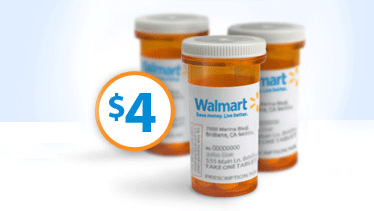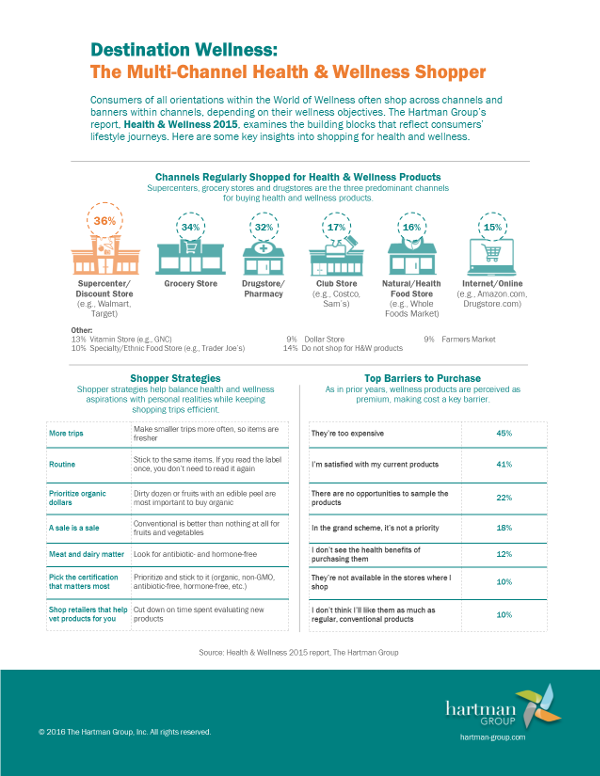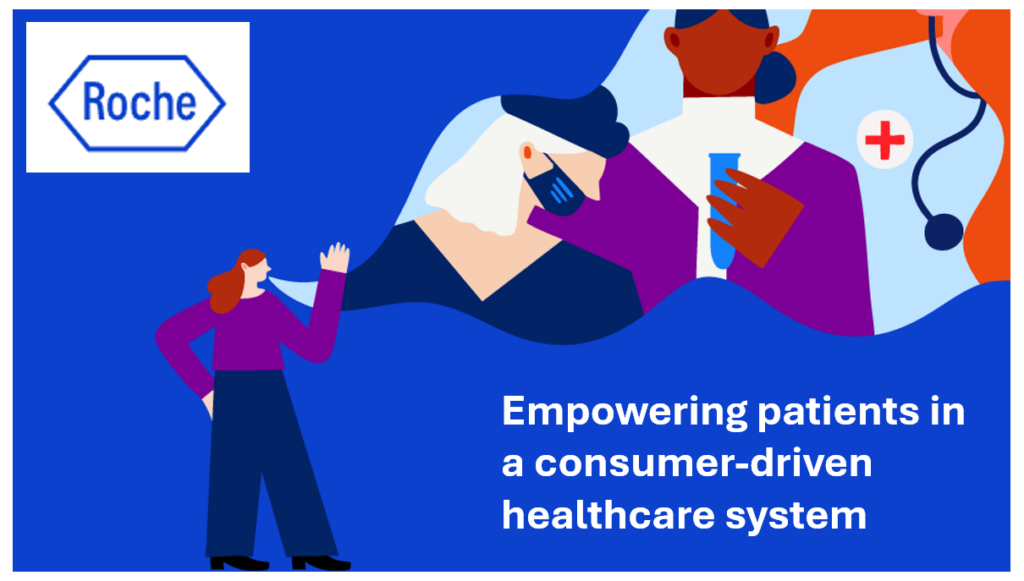Healthcare unwired: nearly half of US consumers are willing to pay
40% of U.S. consumers are willing to pay for remote health monitoring devices and services that would send their medical data to doctors, according to PricewaterhouseCoopers’ Healthcare Unwired (PwC). 51% of consumers would not buy mobile health technology. The uses of mobile health most attractive to consumers are monitoring fitness and welling (cited by 20% of consumers), physician monitoring of health conditions (for 18% of people), and monitoring a previous condition (for 11%). 88% of physicians would like to see patients monitoring various parameters at home, their highest priorities being weight (65%), blood sugar (61%), vital signs like blood pressure (57%),
A link between DTC ads, genetic pre-disposition, and healthy decisions
Detractors of direct-to-consumer advertising (DTC) contend that the ads promote consumers asking for pills they don’t often need, medicalize normal life conditions (such as menopause and sleeplessness), and drive up unnecessary medical spending. A team of researchers now finds that DTC can play an important, positive role in motivating health consumers to adopt healthy behaviors. “The intention to engage in healthy lifestyles was strengthened by exposure to familial risk cues in DTC ads and this effect was mediated through enhanced efficacy to take healthy actions,” the paper concludes. Familial risk cues engendered positive self-efficacy. This is the first empirical study that
Pharma-economics: retail drug prices rice, and consumers react
Two reports, from Consumers Union and the AARP, put the pharmaceutical industry in the spotlight again this week, and not in a good way. First, Consumer Reports polled U.S. adults who take prescription drugs and found that 39% took some action to reduce costs. 27% didn’t take the Rx as prescribed: 16% didn’t fill the prescription, 12% took a drug past its expiration date, and 4% shared a prescription with someone else. These and other survey findings are discussed in Consumers say big pharma influence on docs is concerning, published in the Consumer Reports Health Blog on August 24, 2010. Second, the AARP calculated
The role of retail health clinics post-health reform
Retail health clinics have served American health consumers for about a decade. What have we learned over these ten years? As retail clinics proliferate the U.S. health care ecosystem, what is their impact on the health system, health consumers, and the health economy? The RAND report, Policy Implications of the Use of Retail Clinics, responds to these issues. The key implications of RAND’s study are that: – Health programs should be designed and paid-for to incorporate the adoption of retail clinics and reduce fragmentation and dis-continuity of care. – Learn from the best practices and patient outcomes gained from
Women are the digital mainstream – especially in health
Social networking is key to women’s experience with the Internet, according to comScore’s report, Women on the Web: How Women are Shaping the Internet. Women spend 39% more time on social networks online than men do. comScore studied the “Mars versus Venus” differences between men and women online, discovering that gender stereotypes only go so far. The chart shows the differences between women and men and their e-retail relationships. In stereotypical “men” categories of computer hardware and software, and sports/outdoor, for example, men and women aren’t all that different — only a couple of percentage points difference at most for these categories. Health has
Consumers go generic, both in and outside of health care
1 in 2 Americans are purchasing more generic brands, and 2 in 3 are brown-bagging lunch, according to a HarrisInteractive survey into consumers’ buying patterns 30 months into the recession. Titled, Americans Still Cutting Back on the Little Things to Save Money, Harris’s poll discovered that U.S. consumers are making a lot of micro-changes on a daily basis to deal with the economic downturn. Besides migrating toward generic products and away from branded ones, and not buying as many lunches out, they’re switching to refillable water bottles, using the hairdresser and barber less, cancelling media subscriptions (including magazines, newspapers and cable TV), and
Health care post-recession, and the need for a creative jolt

“Insecurity goes upscale,” finds Robert J. Samuelson in this week’s Newsweek magazine dated July 19, 2010, and titled Creativity in America. The subtext is, “how the recession has changed us.” Samuelson says that this recession has been quite egalitarian in how it’s impacted different economic segments of Americans. In particular, all Americans have gotten more frugal, buying more store brands, cutting vacations short or out altogether (with the ‘staycation’ becoming increasingly common), based on data from a Pew Research Center survey assessing The Great Recession at 30 Months. Pay cuts or stalls, job losses, declining portfolios of home and market wealth, and college grad
Caveat emptor for consumers buying medicine
Two weeks ago, I bought a package containing 100 caplets of Tylenol PM caplets from my grocery store’s pharmacy aisle. I checked the lot number marked on the box against the list on the McNeil consumer healthcare website, and my lot appears to be fine. Today, Avandia, the prescription drug that treats diabetes, hit the headlines of the world’s major newspapers: Avandia Panel Hints At Doubts of Credibility, says the New York Times Avandia Hearings To Reveal True Dangers of Popular Drug, according to FOXNews GlaxoSmithKline Hid Negative Avandia Data: Lawmakers, reads ABC News Glaxo to Pay $460 million in Avandia Settlement, notes Reuters. And there’s also
Women and Walmart: eating Sephora and Ulta’s lunch in the post-recession economy
The recession has taught women how to shop for value, beyond toilet tissue, pantry staples and laundry detergent. Women are more value-conscious in 2010 for that category that once enjoyed ultra-high margins known as cosmetics. And where they’re finding value — along with price, convenience, and authenticity — is Walmart. According to The Benchmarking Company’s 2010 Pink Report, 71% of women in the U.S. shop for beauty and personal care products at Walmart. While Walmart was a cosmetics shopping destination before 2007 for half of U.S. women, the store has expanded its reach into new demographic segments post-recession. 8 in 10
The pharmacy as health hub – what the Rite Aid/American Well alliance means
As Rite Aid partners up with American Well, here’s another example of the further retail-ization of health in the U.S. The subtext of this arrangement is the fact that the pharmacy is a touch-point for health consumers who seek trust, convenience, access, and an understandable market channel for health. Rite Aid will be the first pharmacy to test the American Well service that enables patients to interact online with providers. In this program, consumers will interact live online via Internet or phone with Rite Aid pharmacies from both their homes and private consultation rooms at select Rite Aid pharmacies. The consults will
Embarrassing bodies – preventing people from dying of embarassment in the UK
“Don’t be embarrassed by your body. Learn to love it,” the voice on the video positively commands. Comcast, are you listening? Channel 4 in the United Kingdom hosts the television show, Embarrassing Bodies. There’s also a website providing health information that is detailed, audacious, graphic, and absolutely engaging. On it, you’ll see close-ups of breasts, testicles, vulvae, and most other body parts in Grey’s Anatomy that are suitable for self-examination. The show launched in April 2008 and was watched by over 12 million people. Since there, Embarrassing Bodies has seen countless downloads of health videos, page views on
Personalized medicine: the consumer lens
Health care delivered in today’s model can be thought of as a mass market product. There’s not much customization, even though to each of us, our health is extremely personal to us. Welcome to the emerging era of personalized medicine: “the right treatment for the right person at the right time.” This is just-in-time, customized, measure-twice-cut-once care bespoke for the individual. Read more about this transformational market in PricewaterhouseCoopers’ report, The new science of personalized medicine: Translating the promise into practice. Personalized medicine includes several segments: Personalized medical care, such as telemedicine, health information technology and disease
How to save $290 billion in health care in America? Improve medication adherence
13% of the $2.4 trillion U.S. health economy could be saved by improving adherence to medication, according to an analysis from the New England Healthcare Institute (NEHI). Poor medical adherence leads to poor outcomes and increased medical costs, as described in NEHI’s report, Thinking Outside the Pillbox: a System-wide approach to improving patient medication adherence for chronic disease.. NEHI identified poor medication adherence as a key component in the overall waste and inefficiency in American health care, where poor adherence leads to preventable worsening of disease and increasing health risks — especially among people with chronic disease(s). Since
Generic drugs have saved $734 billion to US health system over 10 years
The Hatch-Waxman Act passed in 1984 to hasten the introduction of generic competition into the pharmaceutical market. According to an analysis from IMS Health, $734 billion have been saved in the past 10 years through the use of generic pharmaceuticals. $121 billion was saved in 2008 alone, based on the IMS data, published in the report, Economic Analysis of Generic Pharmaceuticals 1999-2008. The long name of the Hatch-Waxman Act is the “Drug Price Competition and Patent Term Restoration Act of 1984.” The law has indeed brought drug price competition into the prescription drug market — which was anticipated
Can Wal-Mart Mass Merchandise Electronic Health Records?
“We believe America can have high quality, affordable and accessible health care by 2012.” Who said that? If you guessed President Obama, Senator Edward Kennedy, or Hillary Clinton, you’re wrong. It’s Wal-Mart, on its Health and Wellness webpage. Wal-Mart’s got a new direct-to-physician strategy: selling electronic health records (EHRs). The world’s largest retailer, #1 on the Fortune 100, expands on the company’s experience with retail health clinics. The chain now has 30 clinics sprinkled throughout the south, and in each clinic, there’s an EHR system. The EHRs will be offered through Wal-Mart’s subsidiary, Sam’s Club, jointly with Dell and eClinicalWorks,
Health care in every pot – what we can learn from Costco

And the pot will be from Costco, not Williams-Sonoma. The most telling point about health reform in President Obama’s budget is that, “Some researchers believe that healthcare costs could be reduced by a stunning 30 percent — or about $700 billion a year — without harming quality if we moved as a nation toward the proven and successful practices adopted by the lower-cost areas and hospitals.” That sentence gives us some grist for forecasting some of the elements of health reform — in particular, the last phrase which talks about moving from higher-cost, unproven health practices to lower-cost proven approaches.
Wal-Mart’s wearing a new hat: health care advocate
Nearly 100% of Wal-Mart’s staff is covered by health insurance, either through the company itself or through another source. Covered “associates” reached a total of 94.5% this month, compared with 92.7% last year. The total proportion of Wal-Mart employees covered by Wal-Mart’s plans at the end of open enrollment was 51.8%. Uninsured Wal-Mart employees fell to 5.5%, a 40% drop from 2007 to 2009. The most recently gauged national uninsured rate for employed Americans was 16.8%. Wal-Mart’s role in health care is growing both in terms of its approach to employee health benefits within the company, and
Mourning the death of Elephant, the alternative pharmacy

Elephant Pharm, the six-year-old alternative pharmacy chain based in northern California, filed Chapter 11 bankruptcy papers two days ago. The vision of Elephant was to provide customers with both traditional medicines along with homeopathic treatments. The store’s footprint of 12,000 feet held space for both product and services. Practitioners were available in the store with whom consumers could consult on a range of issues, from Ayurvedic herbs to treat headaches to yoga. Note that a similar company, Pharmaca, shares Elephant’s commitment to integrative medicines, but is based on a much smaller design of about 5,000 square feet. Pharmaca has 23
Health insurance at your shopping mall: Highmark’s consumer-facing strategy
Call it the health insurance Blue-tique. Highmark Blue Cross Blue Shield is opening storefronts in shopping malls to talk health insurance. Highmark Direct will be the name on the front of this store, whose mission it will be to meet with sales staff from the insurance company to learn more about health insurance options and, before leaving the store, sign up for insurance the way a consumer might by a bed from a SelectComfort shop or a stereo component from Bose. The first Highmark Direct shop will be in Pittsburgh, PA. Highmark isn’t the first Blues plan to go
Of fish oil and back pain – complementary medicine utilization shifts since 2002
The use of complementary and alternative medicine (CAM) by Americans has held steady since 2002; however, the types of therapies adopted have changed over five years. The Use of Complementary and Alternative Medicine in the United States, from the NIH’s National Center for Complementary and Alternative Medicine, follows up the agency’s 2002 report. This round, NCCAM offers more details on the use of CAM in kids, as well as CAM use by demographic factors including racial and ethnic groups. CAM is “Complementary” when used with conventional medicine, and “Alternative” when used as a substitute. The most commonly used CAM
Don’t cross Baby Mama — McNeil Will Need More Than Motrin For This New Headache
It all started with a baby, a baby carrier, and Motrin. Oh, and an advertising agency who probably got their Mommy-messaging more than a little bit wrong. Twitter, the social networking software, helped fuel this uproar in a matter of hours. In what is to-date among the fastest viral campaigns in consumer health — that backfired –well over a hundred of mommy blogs and countless Twitter messages expressed emotions on a continuum from outrage to insult about a new campaign targeted to Moms who carry their babies in on-the-body carriers. The ad begins, “Wearing your baby seems to be
Citizens behave like health consumers in the economic downturn – food, drugs and Lasik surgery
From Lasik surgery to prescription-filling, consumers are responding to the U.S. economic downturn — which may result in either rational or irrational health behavior, depending on your lens on “health.” Retailers of health products are responding to the economic environment, in part, by co-branding with health suppliers and plans to gain traction with consumers. A new program has been forged between Aetna and Costco to offer a co-branded Medicare drug plan. Aetna Medicare Rx will be offered in Costco stores located in 17 states (Alaska, Arizona, California, Colorado, Florida, Hawaii, Idaho, Illinois, Michigan, Nevada, New Mexico, New York, Ohio, Oregon,
Walmart, Caterpillar, and growing brand equity in health
George Washington ate and drank here. Now, there’s a Walmart Supercenter in that spot. There’s an important crossroads in my vicinity where four major highways meet; it’s called King of Prussia, which is the intersection of the Schuylkill Expressway (I-76), the Pennsylvania Turnpike, US 422, and US 202. A new Walmart Supercenter opens at this intersection today. Across-the-street from the new Supercenter are Neiman-Marcus, Bloomingdales, and Nordstrom, along with hundreds of other retail chains in the shopping mecca known as the King of Prussia Mall. So Walmart’s on my mind. Walmart has become a sort of touchstone for me
Retail clinics: cheaper per visit and access-enhancing, but cost-expanding
A study in Health Affairs finds that retail clinics achieve cost-savings for primary care maladies. However, an aspect of this story illustrates Roemer’s Law: that the health care market suffers from supply-induced demand. In plain English: the more supply of health services you add to the market, the more costs will be incurred. Or in Health Economics 101 as taught by Paul Feldstein, we learned it this way: “A built bed is a filled bed is a billed bed.” On the upside: Use And Costs Of Care In Retail Clinics Versus Traditional Care Sites finds that retail clinic
Drugstore Dominance, and the Walmart Wild Card

While reading the August 16/17 2008 issue of the Financial Times to keep up with the global political news in Russia and Georgia, and Olympic medal drama in Beijing, I ran across a story that hit much closer-to-home: “Bitter pills in fight for drugstore dominance.” The announcement by CVS Caremark that it would acquire the Longs Drugs store chain for over $2.5 billion is the latest salvo in the battle for the neighborhood pharmacy. This is CVS’s major incursion into California and other western states, where Walgreens enjoys a dominant market share. The most important point in the FT article
Health, the New Status Symbol
We’d rather be healthy than wealthy, according to a new survey from Manning Selvage & Lee (MS&L), the PR firm that’s part of the global communications company, Publicis. MS&L polled Americans’ beliefs on health and self-esteem. Three-quarters (72%) of Americans say that being physically healthy is a symbol of personal success. 91% of Americans said they’d rather be described ads “healthy” than “wealthy.” 71% said they’d rather be seen as someone who “looks really healthy” vs. someone who’s nicely “put together or well-dressed.” These will be glad tidings for MS&L’s client base. MS&L serves a global health clientele which includes
Wal-Mart’s leading role in health care — now, as PBM
When the health care Oscars are announced in 2010 for top roles, the health care academy won’t know whether to cast Wal-Mart as the lead, supporting, director, or producer in health care. Wal-Mart is the third largest pharmacy chain in the U.S. As #1 on the Fortune 500 list, the retailer’s role as a jumbo employer means it has clout in health care negotiations and in the entire American health system. According to the company’s CEO, the company may enter the pharmacy benefits management business. During the company’s annual “Year Beginning Meeting” last week, Wal-Mart CEO Lee Scott talked about
Virgin grows in health care
A new brand of clinic is entering the health care market…aligning itself in a public/private partnership with none other than the largest health system in the world, the National Health Service in the UK. Richard Branson is a master brander, having started up Virgin records in 1970 and Virgin airlines in 1984,. When he took on the Old School airlines, he was seen as the enfant terrible of the industry. But he re-imagined the airline business model and made it fun to fly. Can he do the same for health in the United Kingdom? Here’s the deal: Virgin Healthcare will
Health Populi’s Tea Leaves for 2008
I “leave” you for the year with some great, good, and less-than-sanguine expectations for health care in 2008. These are views filtered through my lens on the health care world: the new consumer, health information technology, globalization, politics, and health economics. Health politics shares the stage with Iraq. Health care is second only to Iraq as the issue that Americans most want the 2008 presidential candidates to talk about, according to the latest Kaiser Health Tracking Poll. Several candidates have responded to the public’s interest with significant health care reform proposals. But major health reform – such as universal access
Happy birthday, Prozac!
The Financial Times celebrates the 20th birthday of Prozac in the newspaper’s Nov 17/18th issue. It’s valuable to look at the rise and fall of Prozac, the brand; the rise of its generic equivalent; and how the drug has profoundly impacted one consumer’s life. Prozac Market. Before it treated depression, Prozac was thought to be an anti-hypertensive. When that didn’t seem to work, Eli Lilly considered it for an anti-obesity treatment. Strike two, clinical-wise. Finally, Lilly took the drug to market to fight depression after it was approved by the FDA on December 29, 1987. In two years, Prozac became
The grocery store as health destination

We love new food products, as evidenced by the ever-growing array and permutation of new goodies at our grocery stores. Among those who say new food products are important to them, the top reason why they buy new food products is health. Open your eyes when you’re next grocery shopping and look around you — your favorite grocer is morhping into a health destination. Whole Foods has launched its Whole Body store-within-a-store concept. Wegmans offers their Eat Well Live Well program. Even Wal-Mart, home of the $4 generic drug price-point, has begun to offer organic food based on demand according





 I was invited to be a Judge for the upcoming
I was invited to be a Judge for the upcoming  Thank you Team Roche for inviting me to brainstorm patients as health citizens, consumers, payers, and voters
Thank you Team Roche for inviting me to brainstorm patients as health citizens, consumers, payers, and voters  For the past 15 years,
For the past 15 years,